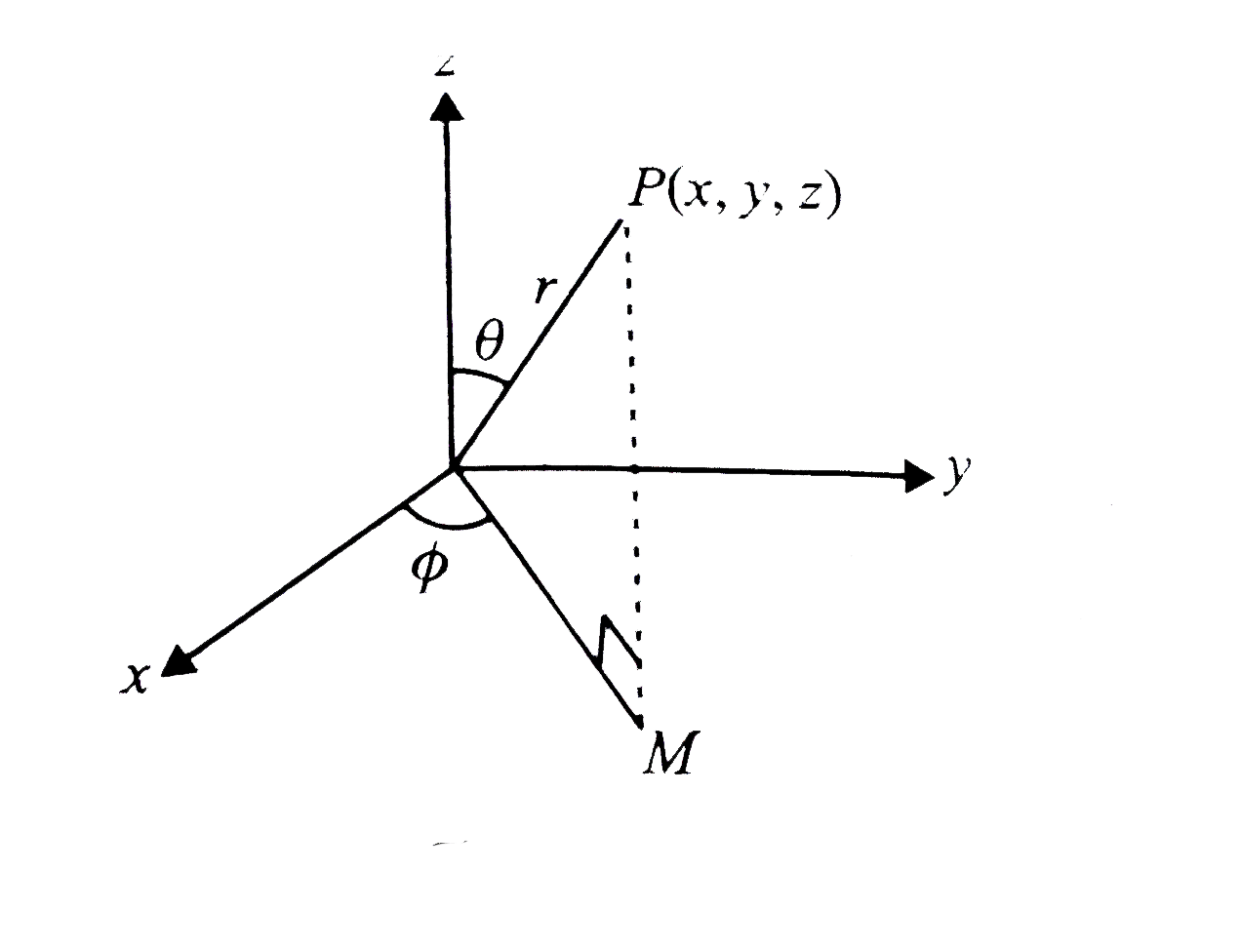Let be the perpendicular from the point to the plane. If makes an angle with the positive direction of the axis and makes an angle with the positive direction of axis, is the origin and are acute angels, then a. b. c. d. Solution in Tamil
, ,
, ,
, ,
, ,
The correct Answer is:B
If be then from the figure,

(neglecting negative sign as are acute)
Also, .
Topper's Solved these Questions
- THREE-DIMENSIONAL GEOMETRY BOOK - CENGAGECHAPTER - THREE-DIMENSIONAL GEOMETRY EXERCISE - Exercise (Reasoning Questions)
10 Videos
- THREE-DIMENSIONAL GEOMETRY BOOK - CENGAGECHAPTER - THREE-DIMENSIONAL GEOMETRY EXERCISE - Exercise (Comprehension)
12 Videos
- THREE-DIMENSIONAL GEOMETRY BOOK - CENGAGECHAPTER - THREE-DIMENSIONAL GEOMETRY EXERCISE - Exercise (Single)
86 Videos
- THREE DIMENSIONAL GEOMETRYBOOK - CENGAGECHAPTER - THREE DIMENSIONAL GEOMETRYEXERCISE - Question Bank
12 Videos
- TRIGNOMETRIC RATIOS IDENTITIES AND TRIGNOMETRIC EQUATIONSBOOK - CENGAGECHAPTER - TRIGNOMETRIC RATIOS IDENTITIES AND TRIGNOMETRIC EQUATIONSEXERCISE - Question Bank
4 Videos
Similar Questions
Statement 1 : Lines →r=ˆi−ˆj+λ(ˆi+ˆj−ˆk)and→r=2ˆi−ˆj+μ(ˆi+ˆj−ˆk) do not intersect.
Statement 2 : Skew lines never intersect.
View SolutionGiven four points A(2,1,0),B(1,0,1),C(3,0,1)andD(0,0,2). Point D lies on a line L orthogonal to the plane determined by the points A, B and C.
The equation of the plane ABC is
View SolutionIn a three-dimensional xyz space , the equation x2−5x+6=0 represents a. Points b. planes c. curves d. pair of straight lines
View SolutionThe equation of the plane which has the property that the point Q(5,4,5) is the reflection of point P(1,2,3) through that plane, is ax+by+cz=d where a,b,c,d∈N. Find the least value of (a+b+c+d).
View SolutionThe number of solution (s) of the equation
√2+cos2x=(sinx+cosx)∈[−π2,π]
View SolutionLet PM be the perpendicular from the point P(1,2,3) to the x−y plane. If →OP makes an angle θ with the positive direction of the z− axis and→OM makes an angle ϕ with the positive direction of x− axis, whereO is the origin and θandϕ are acute angels, then a. cosθcosϕ=1/√14 b. sinθsinϕ=2/√14 c. tanϕ=2 d. tanθ=√5/3
View SolutionIf O be the origin and OP=r and OP makes an angle θ with the positive direction of x-axis and lies in the XY plane find the coordinates of P.
View SolutionLet PQ be the perpendicular form P(1,2,3) to xy-plane. If OP makes an angle theta with the positive direction of z-axis and OQ makes an angle ϕ with the positive direction of x-axis where O is the origin show that tanθ=√53andtanϕ=2.
View SolutionLet PN be the perpendicular from the point
P(1,2,3) to xy-plane. If OP makes an angle α
with positive direction of the z-axis and ON makes
an angle β with the positive direction of x-axis,
where O is the origin (αandβ are acute angles),
then
View SolutionLet PM be the perpendicular from the point P(1,2,3) to XY-plane. If OP makes an angle θ with the positive direction of the Z-axies and OM makes an angle Φ with the positive direction of X-axis, where O is the origin, then find θandΦ.
View SolutionLet PM be the perpendicular from the point P(1,2,3) to XY-plane. If OP makes an angle θ with the positive direction of the Z-axies and OM makes an angle Φ with the positive direction of X-axis, where O is the origin, θandΦ are acute angles, then
View Solutionमाना O मूलबिंदु हैं तथा OP=r तथा OP, x अक्ष की धन दिशा से θ कोण बनाती हैं तथा XY तल में स्थित बिंदु 'P ' के निर्देशांक ज्ञात कीजिये|
View SolutionLet PM be the perpendicular from the point P(1,2,3) to the x−y plane. If →OP makes an angle θ with the positive direction of the z− axis and→OM makes an angle ϕ with the positive direction of x− axis, whereO is the origin and θandϕ are acute angels, then a. cosθcosϕ=1/√14 b. sinθsinϕ=2/√14 c. tanϕ=2 d. tanθ=√5/3
View SolutionLet PM be the perpendicular from the point P(1,2,3) to the x−y plane. If →OP makes an angle θ with the positive direction of the z− axis and→OM makes an angle φ with the positive direction of x− axis, whereO is the origin and θandφ are acute angels, then a. cosθcosφ=1/√14 b. sinθsinφ=2/√14 c. tanφ=2 d. tanθ=√5/3
View Solutionयदि xy तल में बिन्दु P(1,2,3) से PM एक लम्ब हो, यदि −−→OP सदिश z-अक्ष की धनात्मक दिशा में कोण θ तथा −−→OM सदिश x. अक्ष की धनात्मक दिशा में कोण ϕ बनाते है, जहॉ O मूल बिन्दु और θ तथा ϕe न्यून कोण हों, तो
View SolutionIf P≡(1,2,3) and O is origin, then direction cosines of OP are: a)1,2,3 b)−1,−2,−3 c)1√14,2√14,3√14 d)−1√14,2√14,3√14
View Solution
